Historic Walking Trail (1) – Part 1
The historic market town of Thame is a great place to shop and a delightful area where you can enjoy good food and drink in one of the many pubs, cafes and restaurants. This walk, of about an hour, guides you around the centre of this historic market town.
The walk is mostly on level pavements with good access for prams and wheelchairs.
Thame (or Tame) originated as a Saxon settlement at a crossing of the River Thame and is mentioned in the Domesday Book. After the Norman Conquest it came under the jurisdiction of the Bishop of Lincoln and in the 12th C he founded the “new” market town of Thame away from the river and the church and in the area we now recognise as the town centre. In 1215 he diverted the road from Aylesbury to Oxford so that it ran through his new town. The wide High Street and market place with narrow entrances at both ends date from this time and covered the area from the current site of the War Memorial in the east to the Museum in the west.
Thame has always been a market town. The right to hold a weekly market was granted by Royal Charter in the 12th C and the large general market is still held every Tuesday. This is joined by a Farmers’ Market on the second Tuesday of each month and the Cattle Market continues to operate every Wednesday and Friday. A main feature of the town centre is the conservation area with an almost complete absence of modern buildings and where examples may be seen of the building styles of just about every century from the 13th onwards.
Start Point – Thame Town Hall
This walk, of about an hour, guides you around the centre of this historic market town.
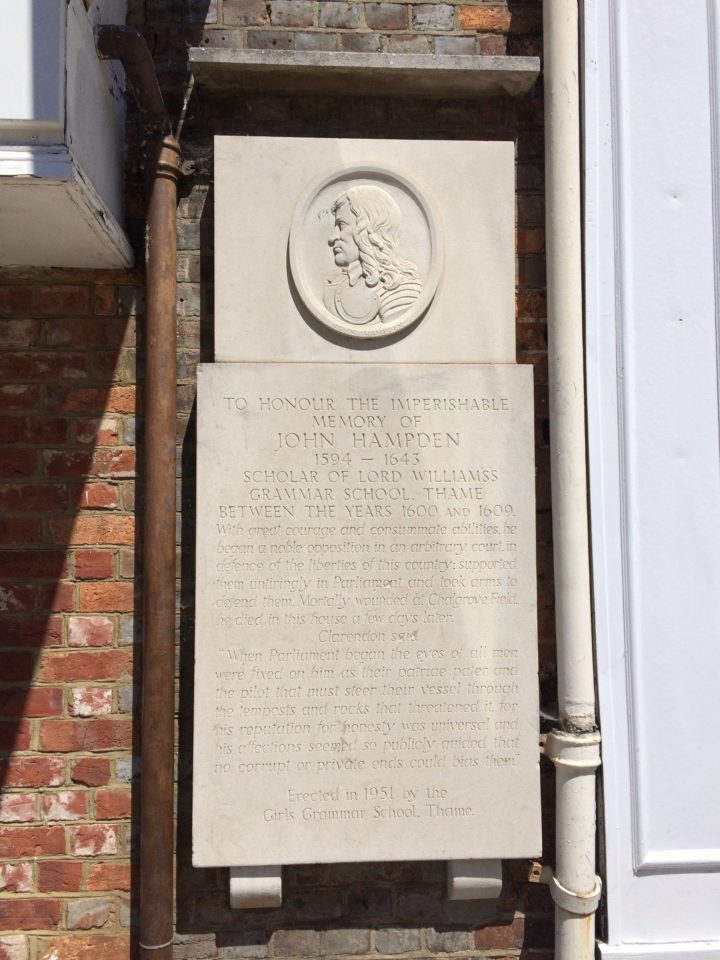
1 – Thame Town Hall
There has been a Market Hall on the site of Thame Town Hall since 1509, with the current Town Hall being the third building on this site. It was built of local brick in 1887 to commemorate Queen Victoria’s Golden Jubilee.
As you progress through the walk, look out for the plaques in the pavements to show you are heading the correct way.
With the entrance to the Town Hall behind you, turn to your right and cross over the road to the entrance to Greyhound walk (to Waitrose).
2 – John Hampden Plaque
There is a plaque in the wall celebrating the English parliamentarian John Hampden. Hampden was one of the leading parliamentarians involved in challenging the authority of Charles I of England, and stood trial in 1637 for refusing to be taxed for ship money. Along with 4 others, his attempted unconstitutional arrest by King Charles I in 1642 sparked the Civil War. He died in Hampden House in 1643 from injuries he received at the Battle of Chalgrove Field during the war, which established the constitutional precedent that the monarch cannot govern without Parliament’s consent. John Hampden is today commemorated at the State opening of Parliament each year by the British Monarch, when the doors of the Commons Chamber are slammed in the face of the monarch’s messenger, symbolising the rights of Parliament and its’ independence from the Monarch. The building was then a private house and in the early 19th C it was the Greyhound Inn.
Facing the plaque, turn right and walk into the narrow Buttermarket.
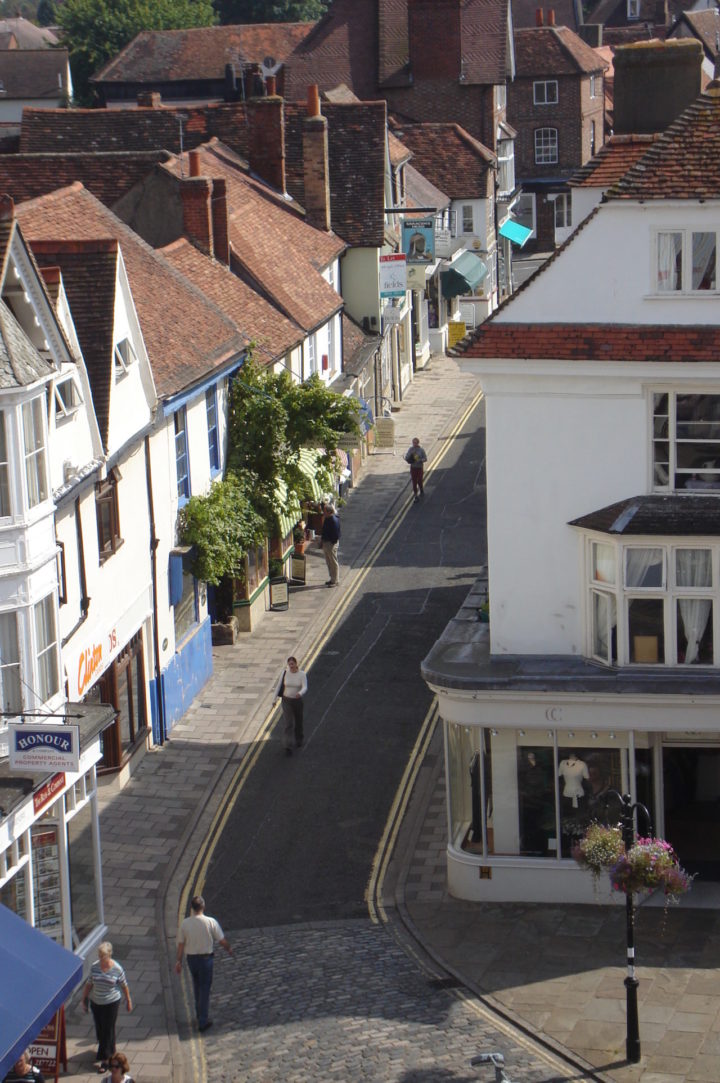
3 – Buttermarket
The Buttermarket was originally just that – a market selling butter, which developed on the north (and therefore cooler) side of the Market. The buildings on the left follow the original building lines. The ones on the right have been built over time, filling in what used to be a wider Market Place. The Saracens Head, towards the end of the street, has changed much over the years but behind the façade lies an early 14th C cruck built hall house and cross wing
At the end of Buttermarket cross over North Street into Montesson Square.
4 – Montesson Square
The 18th C Market House located here has been a baker’s shop, pub (Chequers) and a Countess of Huntingdon (Methodist) chapel – the last surviving one in England. The Upper High Street area was once occupied by the livestock market, the cobbled areas mark where the cattle and pigs were penned.
Keep walking further along the Upper High Street to the Swan Hotel.
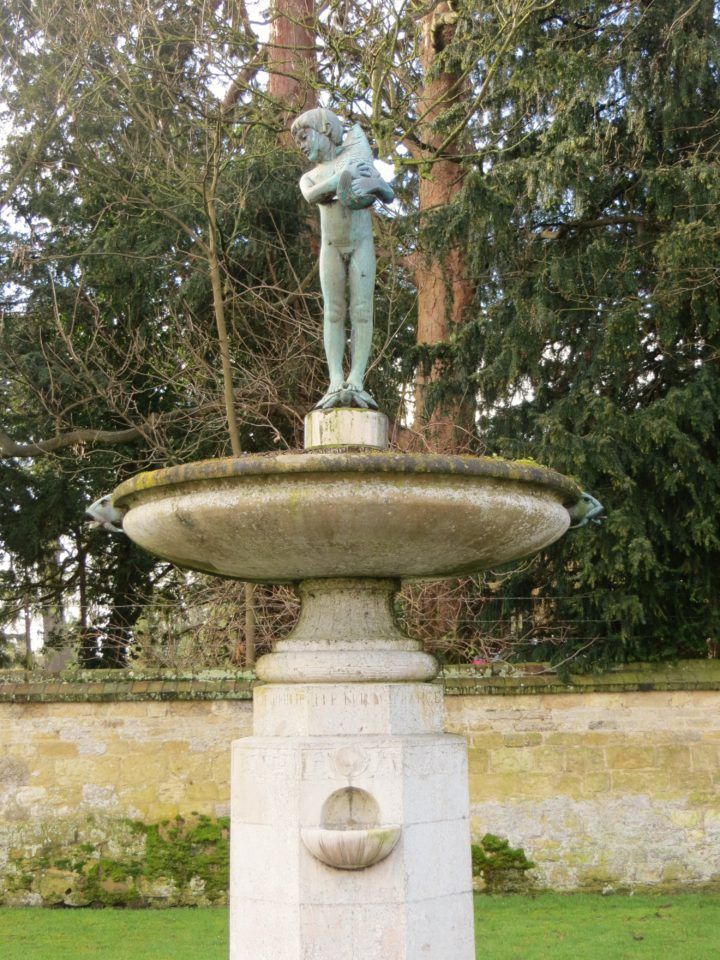
5 – The Swan Hotel
The Swan Hotel dates from the 15th C. Its Georgian façade conceals the timber frame jettied construction which is well worth a look inside, where there is also a 16th C painted ceiling. To the rear, Swan Walk is laid out within an original burgage plot. Each property, or burgage, of the new town included a long and narrow plot of land that was generally large enough to farm to support one family
Continue along the Upper High Street, you will pass by a range of Georgian houses and a neat 15th C cottage (Number 14).
6 – Memorial Gardens
At the end of the car park, cross the Upper High Street into Memorial Gardens. Here you will find the War Memorial which was unveiled by the Prime Minister Lloyd George in 1921 and a lovely figure of a fish boy and ponds erected in memory of the Pearce family. The Pearce family were local wool-staplers: dealers in wool who bought wool from local producers, sorted and graded it to sell on to manufacturers.
Return towards the town centre pass the gates to “The Elms” to Number 34 Upper Highstreet.
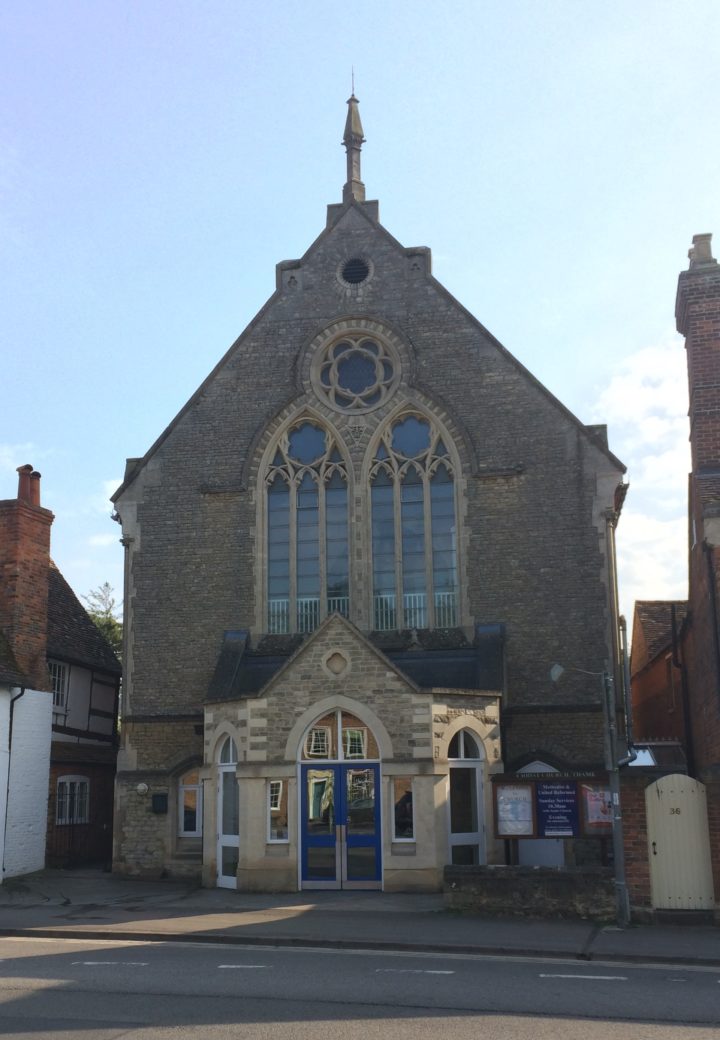
7 – 34 Upper Highstreet
This garage used to home George G West’s bicycle workshop. He was one of the first importers of Renault cars, personally travelling to Paris to collect them and drive them back to Thame. Elizabethan wall paintings were discovered in the room above the porch in 1968 which are now on display at Thame Museum.
Carry on towards the town centre until you get to Christchurch.
8 – Christchurch
Built of brick fronted with stone in 1871 this former Congregationalist chapel had seating for 450, a vestry and schoolroom below.
Continue walking to Nelson Street – in 1906 a house on the High Street was demolished to allow this street to be built. Cross over Nelson Street and continue walking to the Nags Head.
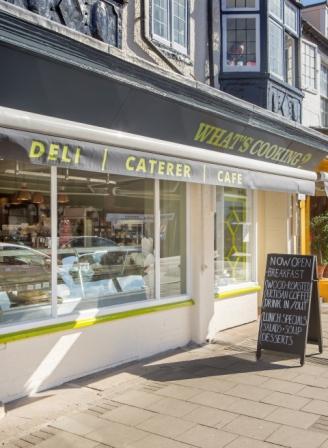
9 – Nag’s Head
The 15th C provenance of the Nag’s Head can be seen in the timber frame west elevation. The pub was known as the King’s Head until, during the Civil War, a supporter of Charles I was hanged from the sign by Parliamentary soldiers. The former Wesleyan chapel next door dates from the 1870s.
Cross over Rooks Lane and then cross the road again to No. 8 Cornmarket
10 – What’s Cooking
This shop is the site of the first Post Office in Thame through which, in 1840, the letter with the very first Penny Black stamp ever issued was delivered to Mr George Wakeman, High Street, Thame.
Walk further along the Cornmarkets to the Birdcage Pub.
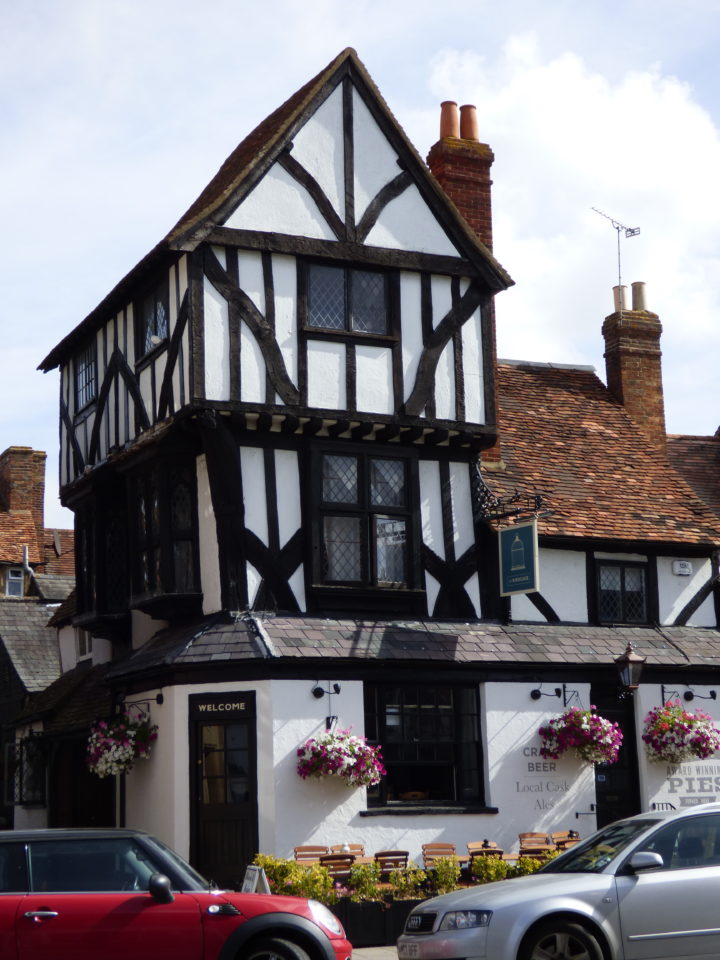
11 – Birdcage Pub
The picturesque double-jettied Bird Cage dates from the 14th C. Built originally as the Market House with an open lower storey, it has served as an inn since the 16th C. We now view the building from the side but it sits at the centre of the old market place and would have dominated the view from the western entrance to the town
Cross to the other side of Cornmarket to the Georgian Spread Eagle which dominates this side of the street.
12 – Georgian Spread Eagle
John Fothergill the innkeeper from 1922-1932 was famed for his pompous attempts to take the inn upmarket and for erecting the massive signpost.
Further along Cornmarket is the James Figg.
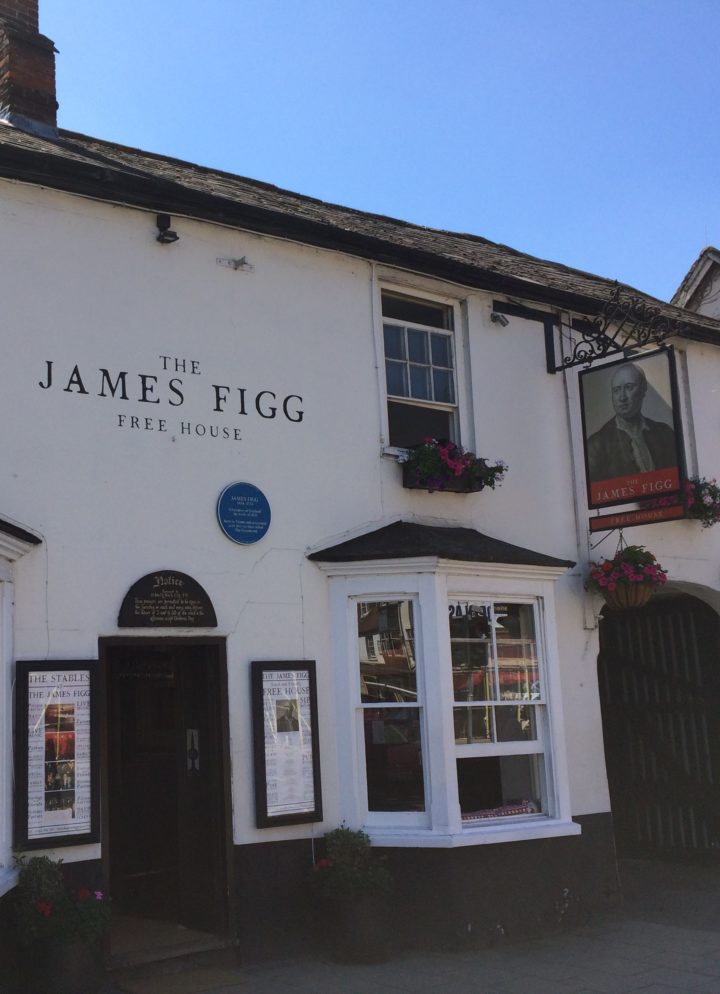
13 – The James Figg
The prize-fighter James Figg was born in Thame in 1684 and used this inn, then the Greyhound, as his headquarters. Having made his name in Thame, by 1719 he had become the world’s first boxing champion, winning many fights in his booth at Marylebone Fields, London.
Further along Cornmarket is Sainsbury’s.
14 – Sainsbury’s
The projecting stanchion above Sainsbury’s once supported the sign of the Fighting Cocks public house. Next door, where Cornmarket becomes High Street, the estate agent’s office is on the site of the Red Lion inn. This was a popular venue for entertainment and the destination of Henry VIII and Ann Boleyn when they processed down the High Street at Michaelmas 1530.
Further along Cornmarket is the Co-op.
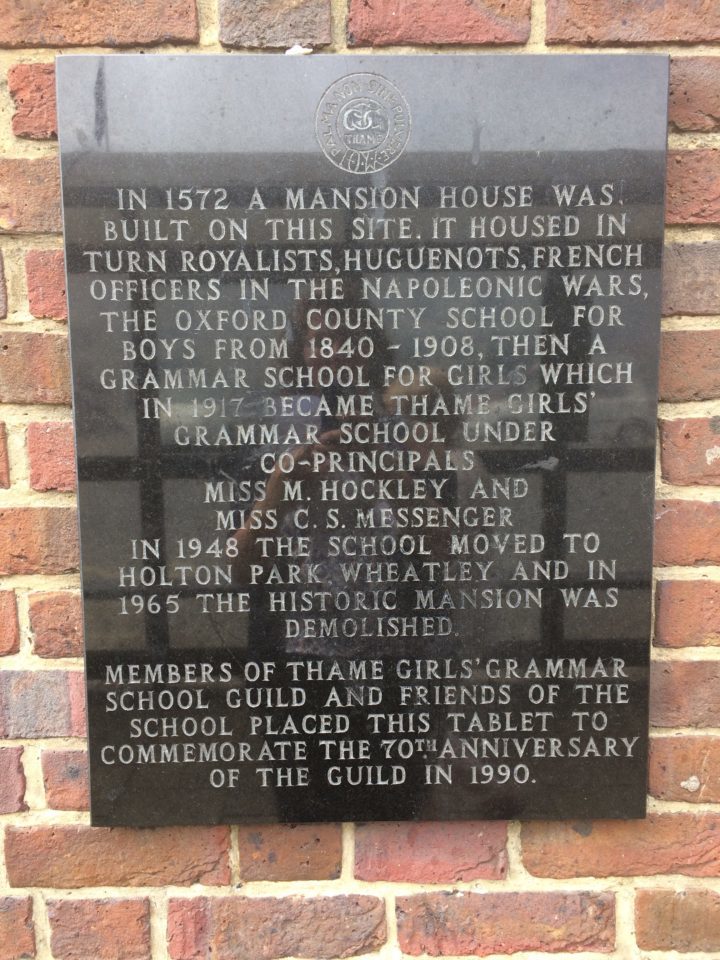
15 – The Co-op
The Co-op is on the site where Mansion House once stood. Built in 1572 and demolished in 1965. During its time it served as a private house, a refuge for 50 French clergy, Howard House boys’ school and the Girls’ Grammar school.
Continue along the High Street where the building line steps back, Number 14.
16 – Masonic Hall
This was at one time the centre for horse shoeing in the town and known as Smith’s Court. The Congregationalists built a chapel here in 1827, the site is now the Masonic Hall.
Continue to walk along the high Street until you come to Number 22.
